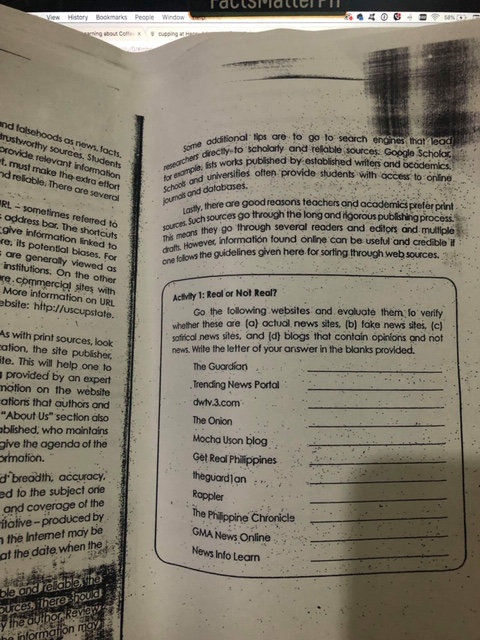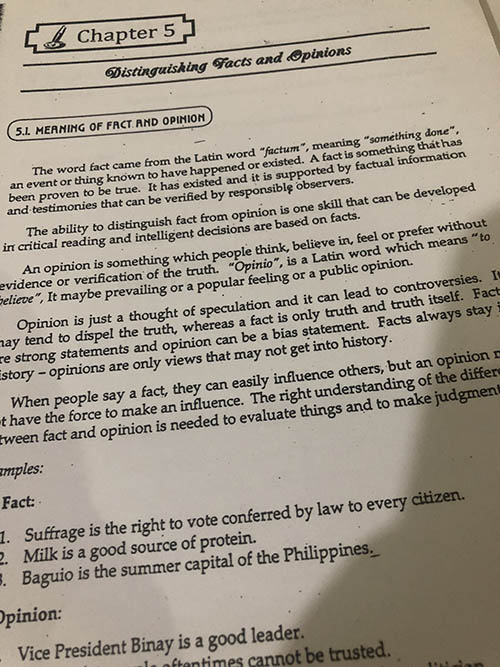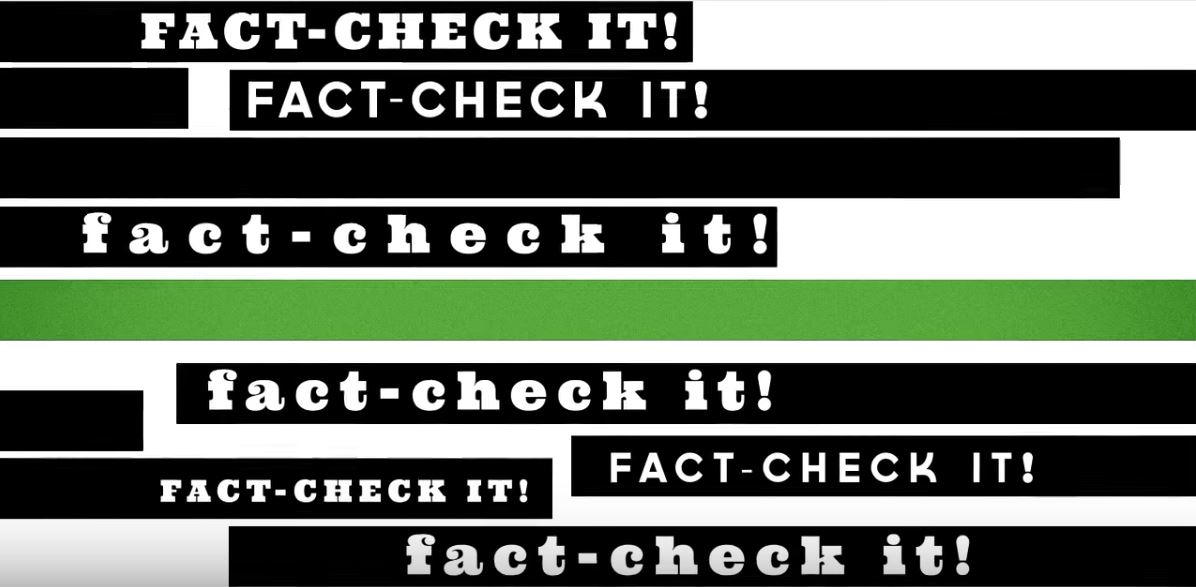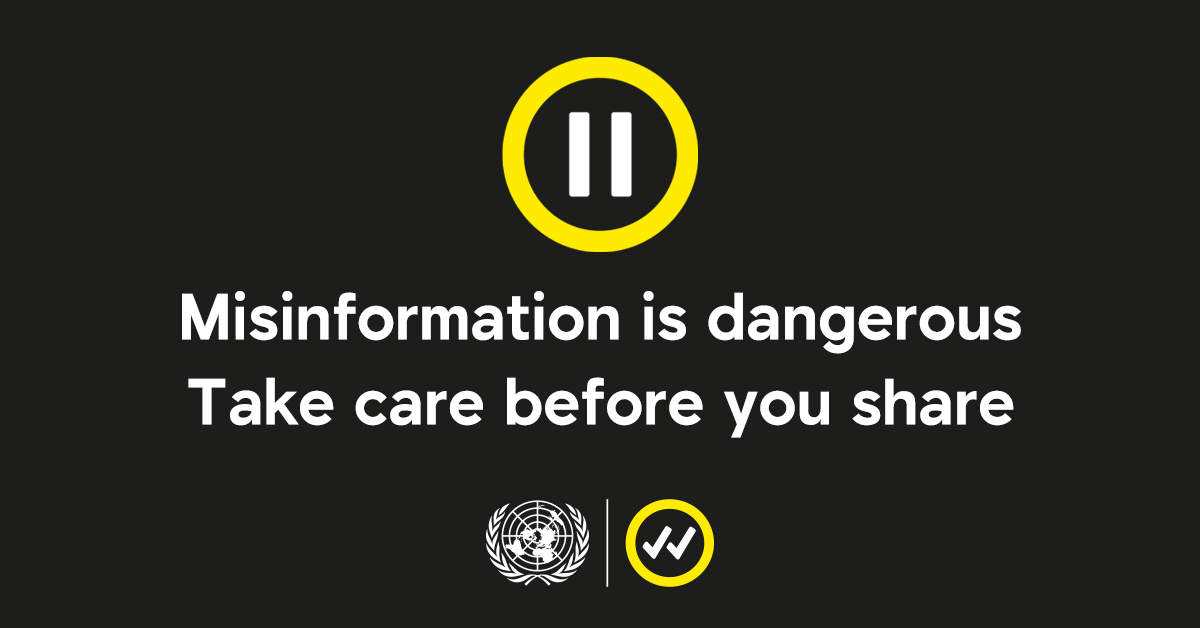Media literacy, critical thinking as taught in a private college
English courses have evolved from the time I studied in the seventies. I recall my English subject centered on grammar and Literature and didn’t dwell much on critical thinking. Writing essays about freedom of speech and rights just before martial law exercised our critical thinking in high school. With the advent of fake news , calls for media literacy in schools became more prominent.
My helper is a college freshman with a goal of graduating Bachelor in Elementary Education Major in Early Childhood Education at a private college. In her first semester, she had a course called “Trends, Networks and Critical Thinking in the 21st Century Culture”. Unfortunately, I did not get the author and title of the textbook because the school only gave them copies of the handouts. I am privy to some of her assignments because I mentioned she can reach out to me in the event she required help. She showed me this exercise “Real or not real” where they go to the websites and test to verify whether these are (a) actual websites (b) fake news sites (c) satirical news sites and (d) blogs that contain opinions and not news.
When she presented me her answers, her only mistake was the misspelled TheGuardian website. I have made the same error in the past. I explained that the Get Real Philippines is not a fake news site. It is a blog but wikipedia and other sources listed it as a fake news site. Looking at the 21st century skills.
Read: Be a savvy news consumer. Here are 6 tips for identifying fake news
“Trends, Networks and Critical Thinking in the 21st Century Culture”
So what is 21st century skills? These are a set of abilities that students need to develop to succeed in the information age. The following are the skills according to three types;
- Learning skills
- Critical Thinking
- Creative thinking
- Collaborating
- Communicating
- Literacy Skills
- Information literacy
- Media literacy
- Technology Literacy
- Life skills
- Flexibility
- Initiative
- Social skills
- Productivity
- Leadership
The whole semester focused on critical thinking. The main concepts were that thinking and critical thinking are imperative in everyday life. There are practical tools used to develop critical thinking skills. Strategies one can apply critical thinking to are on everyday tasks in the real world . One must also learn to accept and reject trends to get better results. They stressed critical thinking as an essential tool to problem-solving and decision-making.
The lessons on critical thinking covered Barriers to cultivating thinking, The Intuitive and The Strategic Thinker. The exercises on critical thinking did not end in the first semester because during the second semester their English class uses the book “Studying and Thinking Skills in English” by Dr. Remedios A. Sanchez and Prof Rosalinda G. Avila. Senior high school students used this book under the K 12. Since she graduated in 2015, they require her to take this English subject for the second semester.
Read: Fact-checking day is every day. Here are 8 tips on how you can stand up for facts
Distinguishing Facts and Opinions
Chapter 5 of the books provides more exercises in explaining the difference between fact and opinion. Students test statements and to make a judgement. Some examples given by the book are:
Fact:
Baguio is the summer capital of the Philippines
Milk is a good source of protein,
Suffrage is the right to vote conferred by law to every citizen
Opinion:
Vice President Binay is a good leader
Ex-convict people often cannot be trusted
Some districts of Manila are governed by corrupt politician
They provide a number of cases in the book including exercises to analyze the truthfulness of each statements. Another exercise is drawing conclusions and forming judgments which are reading skills that guide and train the students to use their reasoning skills to make wise decisions. To draw the right conclusion, a person must know certain facts, analyze the ideas involved and decide what to do or what to believe in. Judgments refer to a particular decision or opinion formed about a case (a court case), a dispute or an argument (e.g. formal debate). Hence, judgments are more formal than conclusion.
Read: 7 types of mis- and disinformation
Tools and strategies to determine fake news, half-truths, from real news
Hopefully, with more schools explaining the basics of critical thinking and distinguishing fact and opinion, we will have more savvy news consumer





